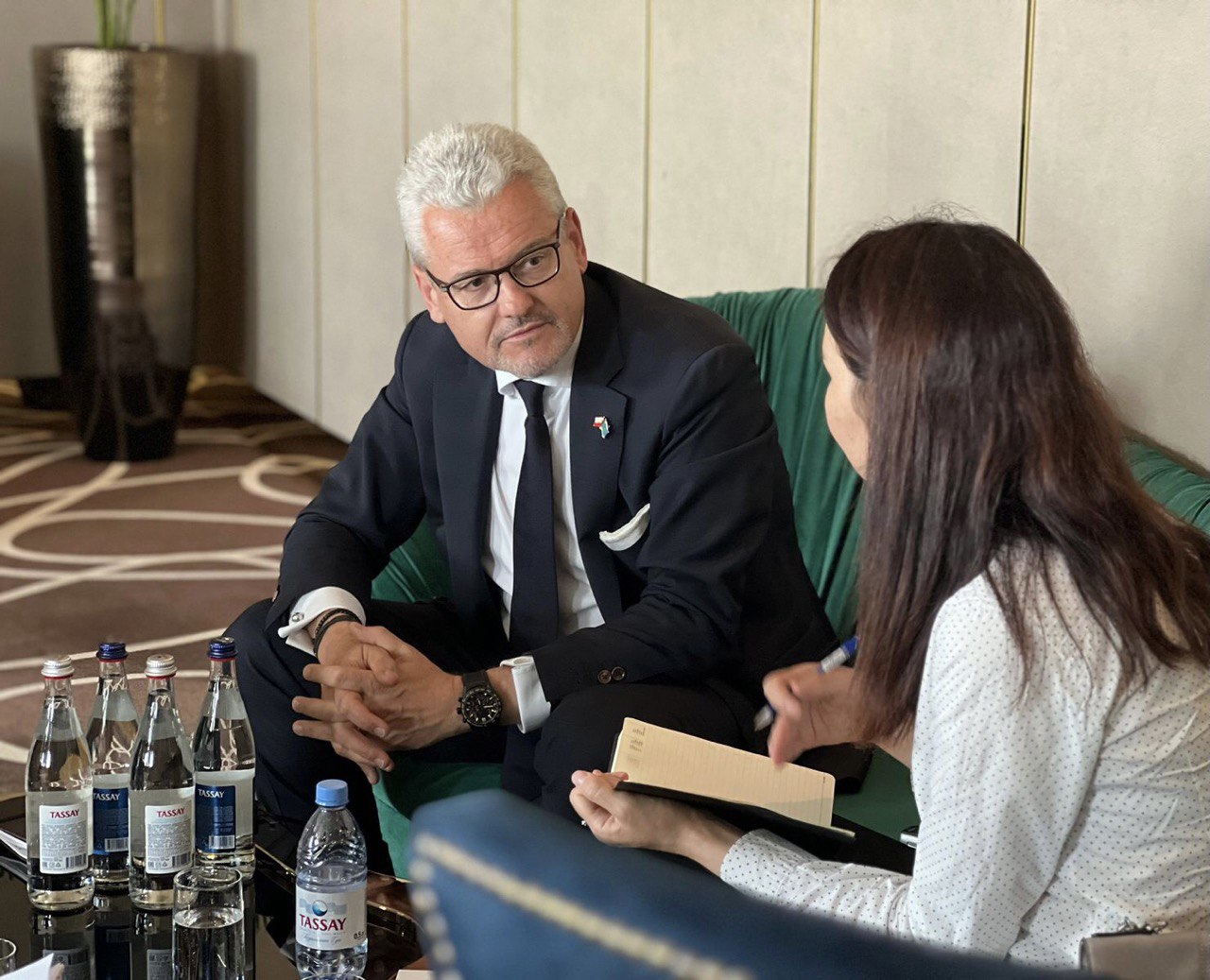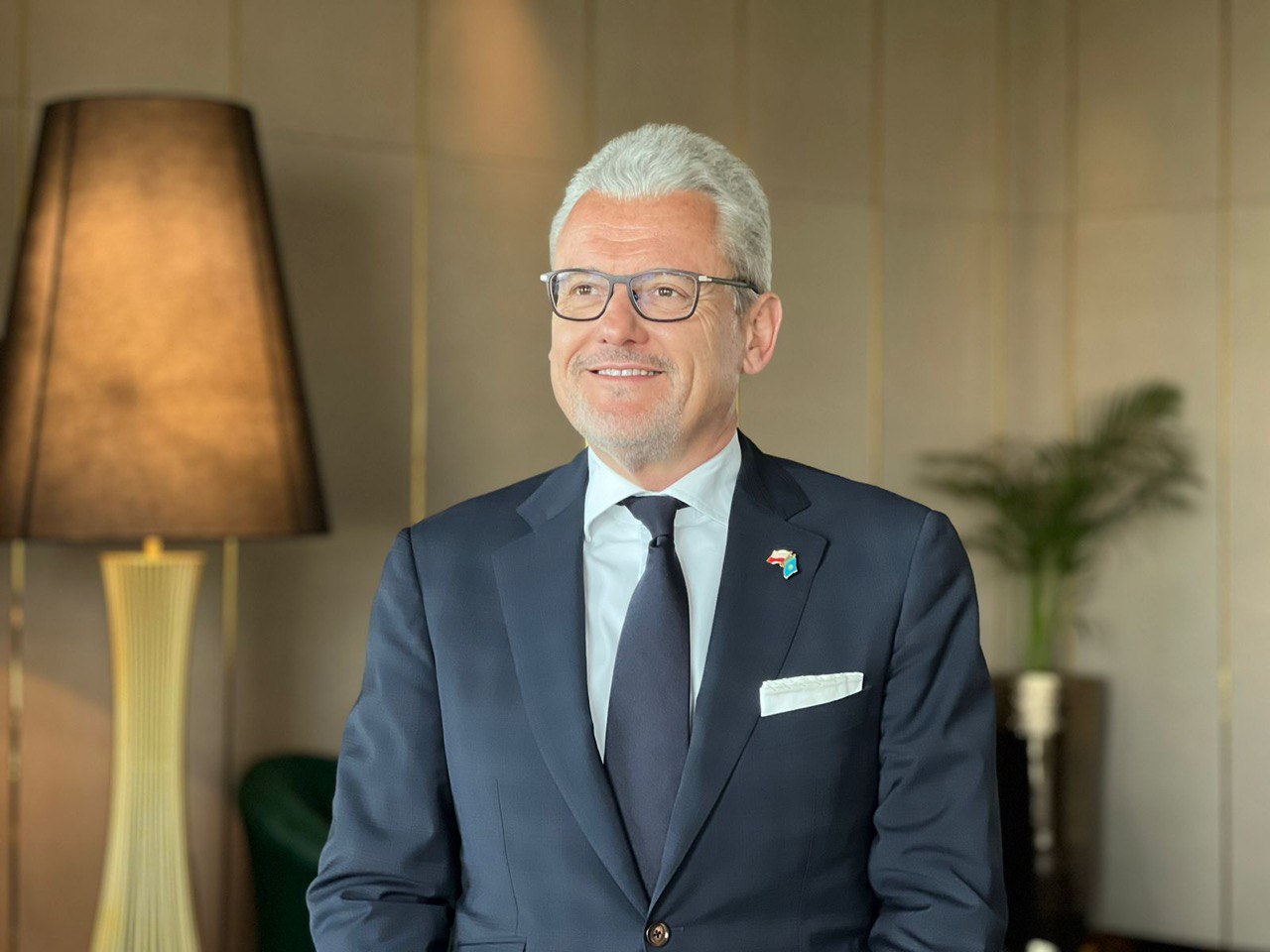ASTANA – The Polpharma Group, one of the world’s leading manufacturers of generic medications, has been operating in Kazakhstan for 12 years. CEO of Polpharma Group Markus Sieger spoke about the results of the company’s investments and projects in the Kazakh pharmaceutical sector, worldwide healthcare developments in an interview with The Astana Times on the eve of the Astana International Forum (AIF).

Photo credit: The Astana Times.
SANTO, a member of the Polpharma Group with the Chimpharm production site in Shymkent, has been part of the Polpharma Group for 12 years. What has changed since then?
Polpharma Group invested in SANTO in 2011 and then started implementing best practices in Kazakhstan by transferring production know-how and training personnel to General manufacturing practices (GMP). We established a manufacturing site and one of our R&D centers in Shymkent.
Over this period, the company changed the promotion ways of the products to doctors and pharmacies and started exporting to Central Asian countries, especially Uzbekistan and Kyrgyzstan. To date, the hub in Kazakhstan provides 30% of the export to Central Asia.

Markus Sieger (CEO Polpharma Group) Photo credit: The Astana Times.
SANTO produces around 240 products, while our group’s product line includes 840. We plan to implement and enlarge the range of products in Kazakhstan.
Polpharma operates in the markets of Central Asia and Central and Eastern Europe. Why does Polpharma invest in these countries? What prospects do you see here?
We believe in this growth market because we genuinely believe that generic medicine is the right approach for those countries due to the limited budget to be spent by people on medication.
Our company has invested around $108 million in SANTO, which is expected to reach $130 million by the end of 2025.
A quality laboratory and an R&D laboratory in Shymkent are under construction and are expected to be finished by 2025. With these newly created 4,000 square meters of the most advanced laboratories, we hope to increase SANTO’s standard to the European level. It is supposed to become the first factory in Central Asia to produce according to European standards.
Does the pharmaceutical industry still have post-pandemic aftershocks? Or is it all in the past and wholly restored?
During COVID, we saw many supply disruptions for the pharmaceutical industry, which made us realize that the supply chains are fragile. For this reason, we believe investing in local production is better. The 50% local drug production target set by President Kassym-Jomart Tokayev is an aspirational target for the industry.
What are your long-term goals and vision for Polpharma Group’s involvement in Kazakhstan, and how do you see the company contributing to the growth and advancement of the pharmaceutical industry in the country?
According to the recent Polpharma Group’s seven-year plan, one of the three key company growth areas is Central Asia, with Shymkent as a manufacturing hub for the whole region.
To date, being the number one pharmaceutical company in Kazakhstan, the company plans to become stronger with new advanced products and therapies, which will also be easier to use for the patient.
Please highlight any partnerships or collaborations that Polpharma Group has established or intends to launch in Kazakhstan.
We have signed partnerships with different companies, including a Hungarian company EGIS and a Spanish company Farmaprojects.
In Kazakhstan, we help a large international company to localize products in our factory. Polpharma Group is open to working together with international companies.
What specific opportunities do you believe exist for foreign investors in Kazakhstan’s pharmaceutical sector, and how does Polpharma Group plan to leverage those opportunities?
President Tokayev has announced the goal of local drug production of 50%, which creates a huge opportunity for companies to come here and invest in infrastructure or to make partnerships with existing players like Polpharma Group.
Polpharma Group plans to invest in people, R&D, and infrastructure.
As a multinational company, what value does Polpharma Group bring to the local economy regarding job creation, technology transfer, and skills development in Kazakhstan?
We contribute to the country’s GDP by local production. We pay taxes and employ 1,300 employees meaning that we are responsible for around 4,000 people (the number of employees multiplied by the average household size). Polpharma also contributes to the trade balance through exports.
We transfer know-how not only to our employees but also to Kazakh universities by giving lectures and working jointly in our laboratories.
We are also investing in a new production line called a direct compression, which will be out into operation in three-four months. The line will be used for a new product for diabetes treatment.
How has Polpharma Group adapted its strategies to continue operating effectively in Kazakhstan and other markets after the pandemic?
Yes. During a pandemic, we had to shift everything into 100% home office, increased the production volume and stock reserves due to an insecure supply chain. After the pandemic, we learned to work in a hybrid format.
We have also started working differently with doctors and pharmacists aligned with their changes. The company provides a lot of educational programs for doctors. A new system for our Salesforce customizing communication with doctors was implemented.
What are the global challenges facing the global pharmaceutical industry today?
After COVID, many people realized that health is the most important human asset, while many people’s immune systems have weakened. As a result, the demand for preventive medicines and drugs overall increased.
To date, Polpharma Groups addreses these issues by selling food supplements, vitamins, and generic drugs, which are more affordable for the population.
Please tell us about trends in healthcare. What is relevant now?
Polpharma Group uses technologies adding value to the company. Among recent projects – digital solutions from the patient and manufacturing sides.
For example, we started a program in Poland called the “cardiology compliance project,” providing interaction between the patient and the doctor. This application reminds and motivates a patient to take the drug, while the patient can provide a doctor with feedback about the drug. This helps the patient to comply with the treatment plan.
In industrial operations for our factories, we have a concept called a digital twin. This virtual twin, fueled by artificial intelligence (AI), learns the processes at the factory and assists at each step, giving advice on improvement.


